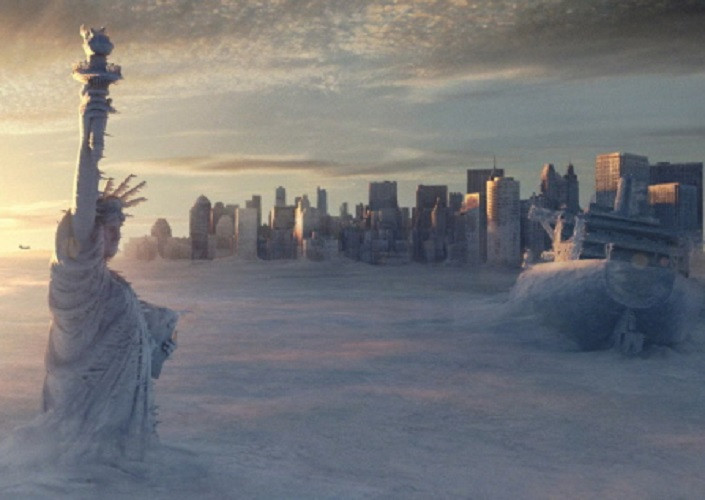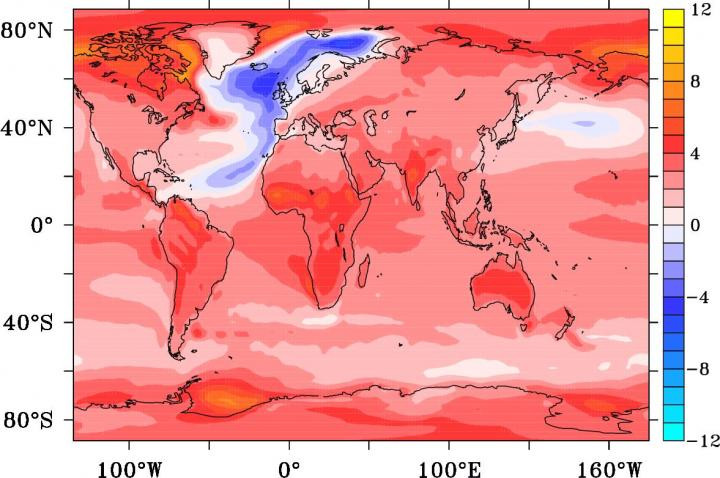Scientific analysis shows The Day After Tomorrow disaster could happen

Scientific analysis from the University of Southampton shows a climate change-induced disaster, similar to the story line of 2004 film The Day After Tomorrow, could actually happen. Experts had dismissed the Hollywood movie, which sees the world freeze over, when it came out as being implausible and scientifically inaccurate.
However, by using the German climate model ECHAM at the Max-Planck Institute in Hamburg, Professor Sybren Drijfhout from Ocean and Earth Science at the University of Southampton came to the conclusion that if the Atlantic meridional overturning circulation (AMOC) – a major current system in the Atlantic Ocean – collapses, as it did in the Jake Gyllenhaal film, coupled with global warming, then the Earth will cool for 20 years. Global warming would then continue as normal with an offset of global temperatures of 0.8C.

Drijfhout said: "The planet earth recovers from the AMOC collapse in about 40 years when global warming continues at present-day rates, but near the eastern boundary of the North Atlantic (including the British Isles) it takes more than a century before temperature is back to normal."
The study, which was published in Scientific Reports, notes that the effect of atmospheric cooling from an AMOC collapse is tied to a heat flow from the atmosphere into the ocean that has been observed through the climate hiatus of the past 15 years.
Drijfhout added: "When a similar cooling or reduced heating is caused by volcanic eruptions or decreasing greenhouse emissions the heat flow is reversed, from the ocean into the atmosphere. A similar reversal of energy flow is also visible at the top of the atmosphere. These very different fingerprints in energy flow between atmospheric radiative forcing and internal ocean circulation processes make it possible to attribute the cause of a climate hiatus period.
"It can be excluded, however, that this hiatus period was solely caused by changes in atmospheric forcing, either due to volcanic eruptions, more aerosols emissions in Asia, or reduced greenhouse gas emissions. Changes in ocean circulation must have played an important role. Natural variations have counteracted the greenhouse effect for a decade or so, but I expect this period is over now."
© Copyright IBTimes 2025. All rights reserved.






















